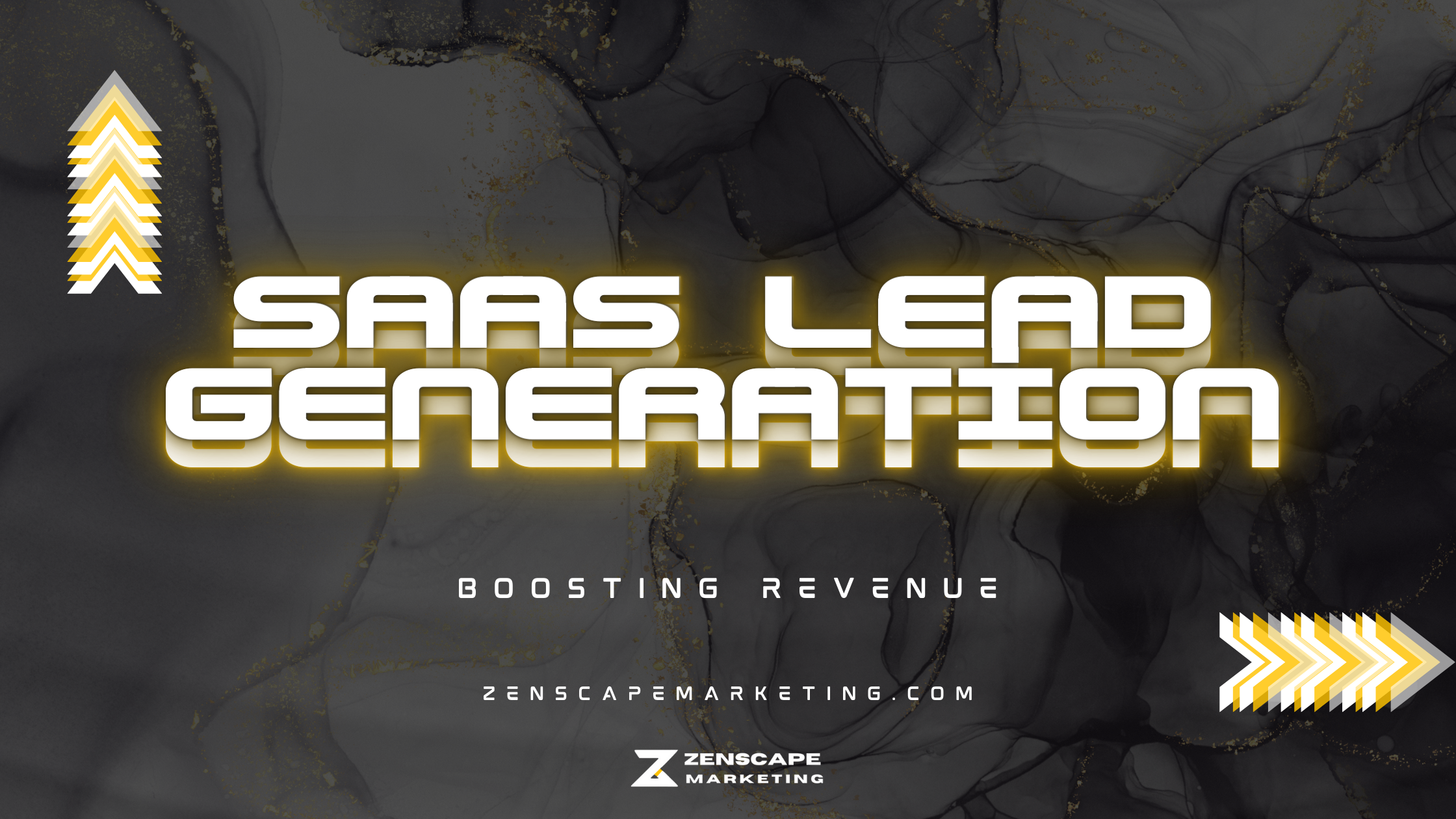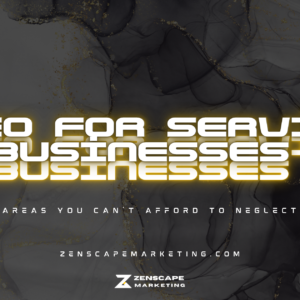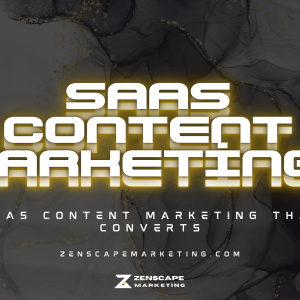For SaaS companies, lead generation is essential for driving growth and boosting revenue. With a steady flow of new, qualified leads entering the sales pipeline, customer acquisition will be consistent, and revenue goals will be easier to achieve. By prioritizing SaaS lead generation and implementing a focused lead gen strategy, SaaS businesses can create more opportunities to showcase their solution, convert prospects into paying customers, and continually expand their customer base.
The key is using innovative, optimized lead-generation tactics to attract and engage your ideal customers at each stage of the buyer’s journey. You can significantly scale your sales pipeline velocity and closed revenue with the right inbound and outbound strategies.
This comprehensive guide explores proven methods and tactical strategies for effective SaaS lead generation to help you generate more qualified leads and close more deals. Follow these best practices to take your lead gen to the next level.
Identify Your Target Audience and Ideal Customer Profile
- Research your market and analyze existing customer data.
Identifying your best-fit target customers is the critical first step in any effective lead-generation strategy. Researching your broader market and analyzing your current customer base can reveal common patterns and attributes for the buyers most likely to get value from your SaaS solution.
- Build detailed buyer personas and ICPs to focus efforts.
Build out detailed buyer personas representing your ideal customer profile (ICP). Include relevant details like demographics, role, industry, company size, pain points, and use cases that indicate they would benefit from your SaaS product. The more precise you define your ICP, the better you can ensure your lead gen messaging and offers resonate with your audience and influence them to convert.
For example, a project management SaaS company might determine that their ideal customers are operations managers at mid-sized tech startups who need help juggling. multiple projects and teams. With this ICP clarified, they can craft content about improving project workflows for tech industry readers.
- Tailor messaging and outreach to appeal to your audience.
Analyze your current customer base and look for common patterns in demographics, pain points, and use cases for your product. Build out detailed buyer personas that represent your ideal customers. Outline information on their role, industry, company size, challenges they face, and reasons they would find value in your solution. The more precise your ideal customer profile is, the better you can tailor messaging and outreach efforts.
Produce Engaging Content For Each Stage of the Funnel
- Blog posts, ebooks, and case studies for top-funnel
Once you’ve identified your target audience, the next step is developing compelling content designed to attract, nurture, and convert leads throughout every sales funnel stage.
For the top of the funnel, create educational blog posts, ebooks, guides, and case studies that provide value and help address your ICP’s challenges. This content should focus on informing readers and establishing your company as a thought leader in your space. Promote this content through your website, social channels, and ads.
- Educational webinars and demos for mid-funnel.
For the middle stage, develop content like live or recorded webinars, product demos, and free assessment tools that showcase how your SaaS can solve their pain points. Gate this content behind lead capture forms to generate new sales leads when visitors opt-in.
- Free trials and product tours for bottom-funnel
To convert leads at the bottom stage, offer free trials, product tours, ROI calculators, and other content encourages leads to experience your product’s value firsthand.
- Optimize content for search to attract organic traffic
Be sure to optimize all of your content for relevant keywords and search intent so it attracts organic traffic from prospective buyers already searching for solutions online. SEO-optimized content will fuel a steady inbound lead flow.
Execute Multi-Channel Lead Generation Strategies
With your content assets and offers ready, deploy them across various lead generation channels and platforms to maximize reach and exposure.
- SEO to rank higher in search and drive web traffic
An essential component is an SEO strategy focused on ranking your website higher in search results for industry keywords prospective customers are searching for. Increased organic visibility will lead to more visitors and conversion opportunities.
- Paid ads (Google, LinkedIn) to reach more prospects.
You should also leverage paid advertising, such as Google Ads, LinkedIn Ads, and Facebook Ads. Paid ads allow you to get your content and offer directly in front of more of your target audience as they browse online. Retargeting ads help remind prospects to come back and convert.
- Email campaigns to nurture leads and convert sign-ups
Email marketing campaigns are another important channel for capturing new leads. Send emails with gated content offers out to your existing audience and buyers at target companies. This approach helps continually grow your lead pipeline.
- Social media engagement to increase brand awareness
An active social media presence on platforms like Twitter, LinkedIn, and Facebook is useful for increasing overall brand awareness and website traffic. Engage your audience with helpful content, and promote new offers.
The goal is to execute multi-touch lead nurturing across channels to build relationships over time until leads are sales-ready. Omnichannel strategies achieve the best conversion results.
Develop Effective Sales Processes to Convert Leads
To capitalize on all the leads generated entirely, you need effective sales processes to convert those leads into paying customers. Here are some key strategies to improve lead conversion:
Implement lead scoring – Track engagement with content and assign scores to identify hot leads for immediate sales outreach.
Automate lead assignment – Route new leads to the right sales reps based on territory, ICP fit, and availability for prompt follow-up.
Optimize sales workflows – Ensure best practices for making contact attempts, scheduling meetings, preparing proposals, and closing the deal.
Offer clear conversion paths – Provide clear next steps for leads progressing from free trial sign-up to product demo to closed deal. Reduce friction in the conversion process.
Continually refine based on data – Analyze metrics on conversions by channel, campaign, rep, and other factors to identify optimization opportunities.
With the right sales processes in place to nurture and convert inbound leads, you can expect to increase deals closed, improve sales cycle times, and scale revenue.
Key Tactics for SaaS Lead Generation
Now that we’ve covered the essential foundations of an effective lead generation program let’s look at some proven lead gen tactics and activities for SaaS companies to focus on:
Content Syndication
Promote your blog posts, guides, and videos through third-party content sites like Medium to expand your audience reach. Leverage influencer and guest posting opportunities also.
- Webinars
Host live or on-demand webinars to engage prospects with demos and expert advice. Promote these to generate leads.
- Free Trial Offers
Offering free access makes it easy for prospects to experience your product value first-hand. Require contact details to set up a trial account.
- Product Tours
Walk prospects through key product features and capabilities via online product tours.
- SEO Optimization
Use on-page and technical SEO best practices to improve organic rankings and traffic. Create content aimed at buyer keywords.
- Paid Ads
Target accounts and roles matching your ICP with LinkedIn / Google / Facebook ads. Drive visits and lead capture.
- Website Optimization
Ensure your website provides an excellent user experience and seamlessly guides visitors into conversion funnels.
- Email Nurturing
Send targeted email campaigns with helpful content and offers to engage, nurture and convert leads over time.
- Sales Enablement
Equip sales teams with assets like one pager, sample email templates, and decks to improve prospect conversations.
SaaS Lead Generation Metrics to Track
Some important metrics to monitor the performance and results of your lead generation campaigns include:
- Total new leads generated
- Lead quality score or grade
- Lead conversion rate
- Lead to customer conversion rate
- Cost per lead
- Sales accepted lead rate
- Time to convert leads to sales
- Revenue from new leads
- Return on investment by channel
Consistently measuring your lead generation results provides insight into what’s working well and areas needing improvement. Optimize efforts based on the data.
Conclusion
Implementing a strategic, metrics-driven approach to SaaS lead generation will enable your business to continually add new prospects to your sales pipeline and meet revenue goals month after month.
However, designing and managing an effective lead generation strategy for many SaaS companies can be challenging with limited time and marketing resources.
That’s where the experts at Zenscape Marketing can help.
Our SaaS Lead Generation Program provides
- In-depth buyer and ICP persona research to identify your best-fit audience.
- Multi-channel lead generation strategies, including SEO, paid ads, email nurturing, and content creation.
- Sales workflow optimization and lead management to boost conversions.
- Monthly reporting on key lead gen KPIs and results.
- We utilize proven inbound methodologies and data-driven optimization to maximize the quality and quantity of leads for SaaS businesses like yours.
Contact us today to learn more about our track record of delivering over $5 million in the pipeline for SaaS clients. Our team is ready to partner with you to drive results and revenue growth through effective SaaS lead generation. Let’s discuss how we can customize an approach tailored to your business needs and goals.






